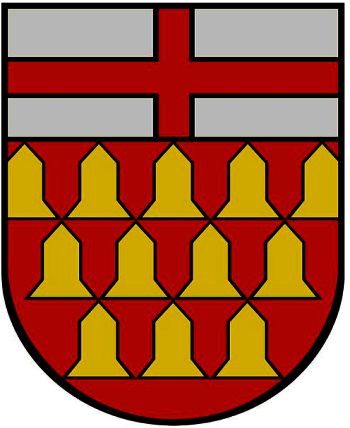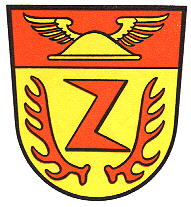Wadern: Difference between revisions
Knorrepoes (talk | contribs) m (Text replacement - "{{media}}" to " {{de1}} {{media1}}") |
Knorrepoes (talk | contribs) m (Text replacement - "{{de}}" to "") |
||
| Line 1: | Line 1: | ||
'''WADERN''' | '''WADERN''' | ||
Revision as of 05:51, 27 December 2022
WADERN
State : Saarland
District (Kreis) : Merzig-Wadern
Additions : 1974 Bardenbach, Büschfeld, Buweiler-Rathen, Dagstuhl, Gehweiler, Kostenbach, Krettnich, Lockweiler, Morscholz, Münchweiler, Niederlöstern, Noswendel, Nunkirchen, Oberlöstern, Steinberg, Wadrill, Wedern
| German |
|
| English | No blazon/translation known. Please click here to send your (heraldic !) blazon or translation |
Origin/meaning
The arms were officially granted on October 11, 1974 an dis identical to the arms of Amt Wadern.
The cross is taken from the arms of the State of Trier, to which 4 villages belonged. The other villages belonged to the Dagstuhl estate, from which the vair is derived.
The old arms were granted in 1962.
There are no historical arms or seals known. The upper part shows the helmet of Mercury, the symbol of trade. Wadern is the main trading centre in the area. The wolf's hook is taken from the arms of the Lords of Soetern, who became lords of the town in the 17th century. The deer antlers have 12 branches, which was used by Count Josef Anton von Oettingen-Soetern in 1775 to symbolise the 12 major farmers around the village
Literature: Stadler, 1964-1971, 8 volumes.


